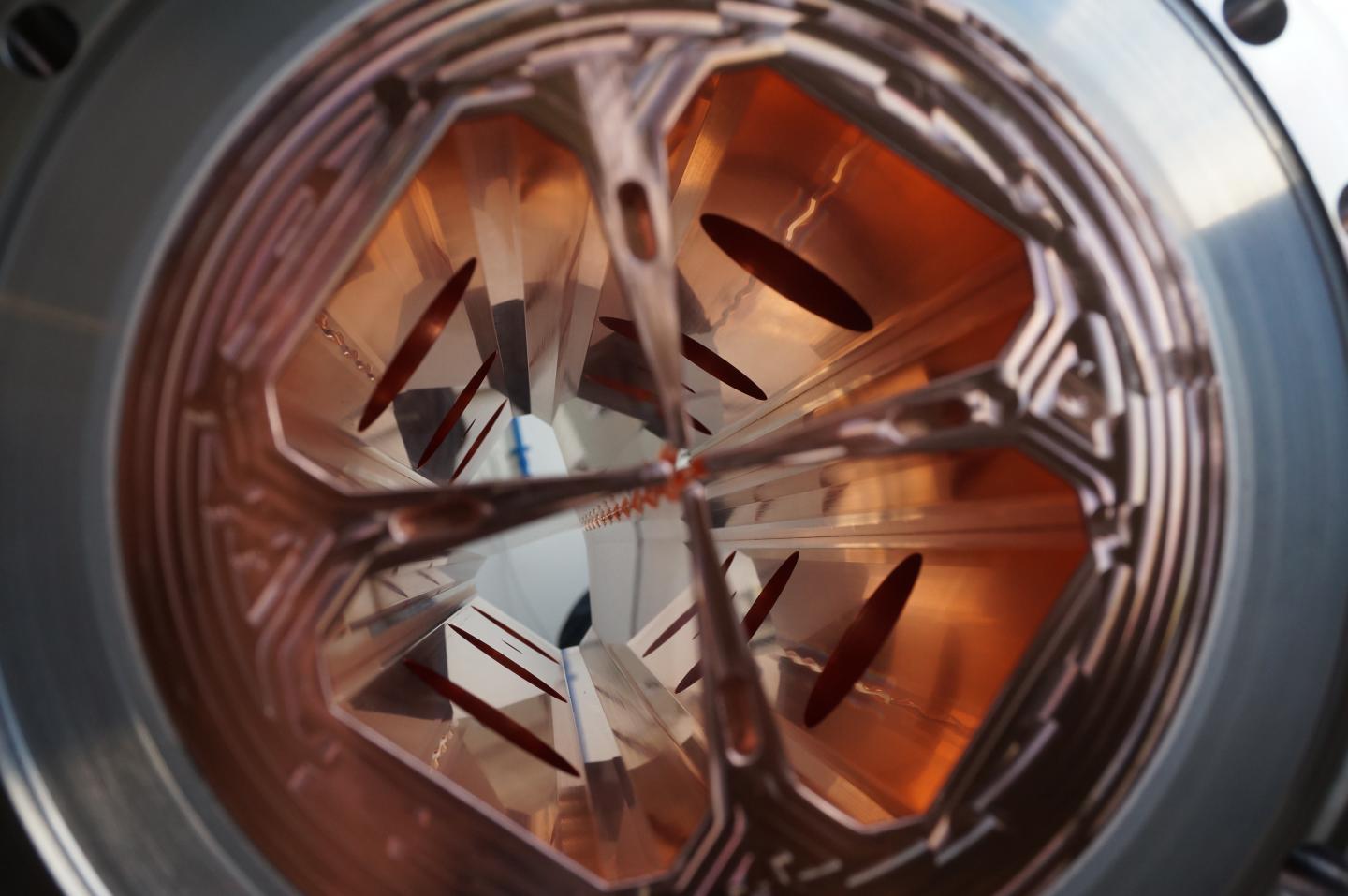(Image: Benjamin Koubek)
2019 saw the official launch of the Next Ion Medical Machine Study (NIMMS), an umbrella R&D programme for – both existing and new – CERN accelerator technologies linked to heavy-ion therapy.
Heavy-ion therapy, which refers to carbon and other ions heavier than protons, holds many promises in terms of therapeutic advantages over radiotherapy with both protons and X-rays; recent data also point toward the possibility of using ion therapy to enhance the effectiveness of cancer immunotherapy. The size and cost of the required infrastructures, however, is a major impediment to the construction of new heavy-ion therapy centres and to their commercial availability as turnkey systems.
Novel technology solutions are needed to propel the development of heavy-ion therapy, and NIMMS focuses on those that correspond to core CERN competences and expertise: superconducting magnets, linacs, and gantries. The use of superconductivity is widely regarded as a game-changer in terms of possible reduction in terms of footprint and of operation costs, both for a synchrotron-based accelerator design and for gantries; new lightweight gantry concepts to steer the ion beam around the patient, and heavy-ion therapeutic linacs are also being studied. These developments will provide a tool-box of know-how to be used and adapted by end-users with the ultimate goal being a new generation of more compact and cost-effective ion therapy facilities.
NIMMS has received funding by the CERN Budget for Knowledge Transfer to Medical Applications, through a grant awarded in 2019.
The NIMMS programme comes twenty years after the Proton Ion Medical Machine Study (PIMMS) [1], initiated at CERN in the 90’s in partnership with TERA Foundation (Italy), MedAustron (Austria), and Onkologie 2000 (Czech Republic). PIMMS aimed at producing a synchrotron design optimised for treating cancer patients with protons and carbon ions. The proposed design was detailed in two reports issued in 2000; The initial design was improved by the TERA Foundation, and finally evolved into the machine built for the CNAO treatment centre in Italy, with seminal contributions from INFN. Later on, MedAustron in Austria built its treatment centre starting from the CNAO design and received technological support from CERN.

